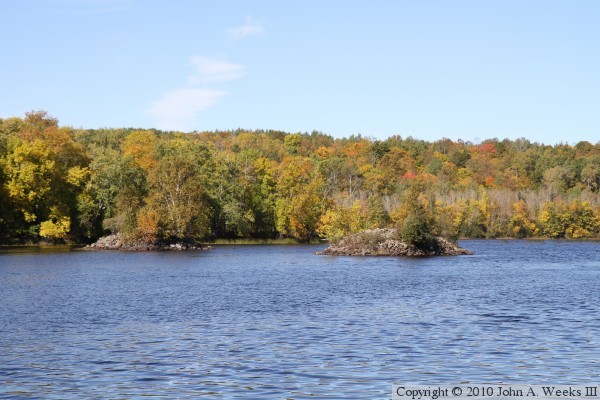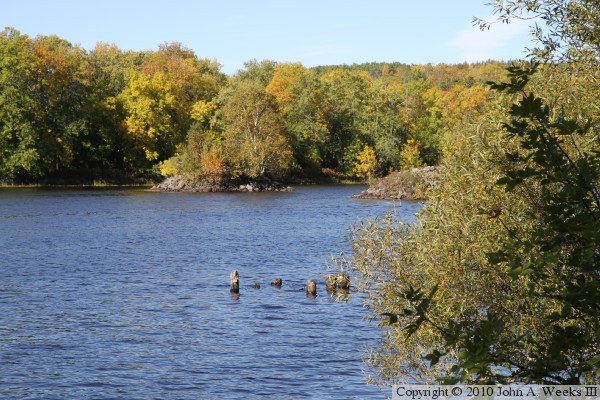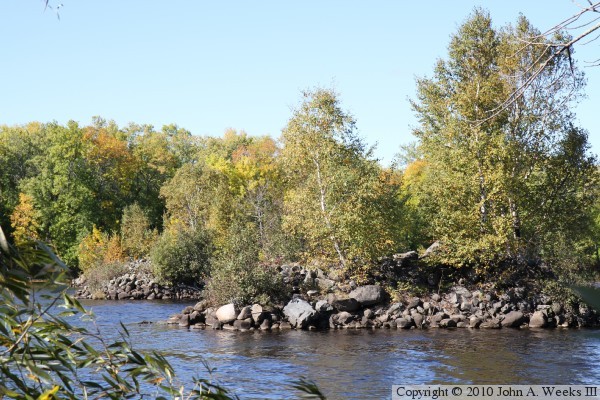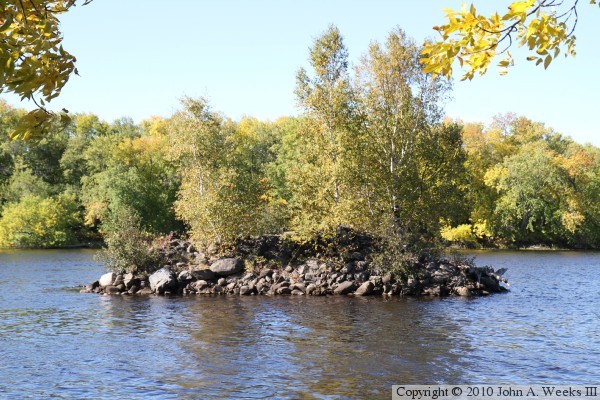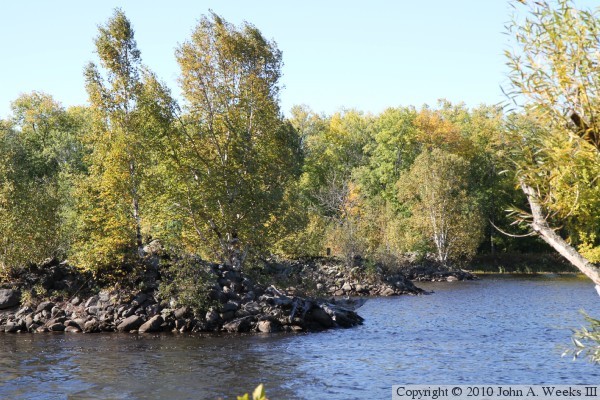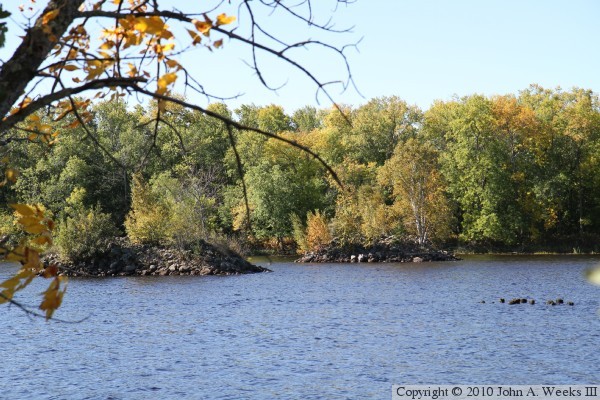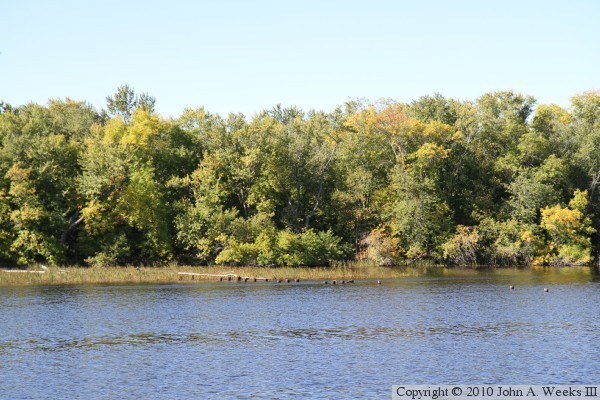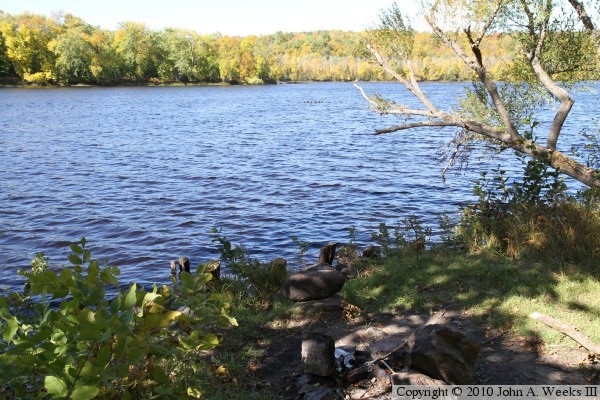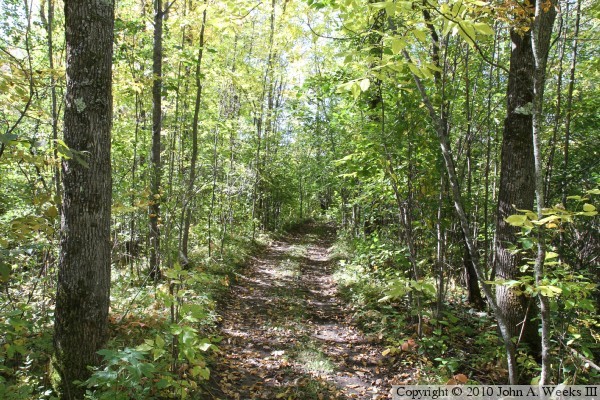A log boom is a place where lumberman would sort logs that were floated down the river. They would group logs by the logging crews that owned them, and sent them in groups down to the appropriate mill. This was done by placing chains across the river to catch the logs as they floated down stream. This was a very elaborate boom site. It features a series of man-made islands, which were called jam piers. This created a series of slots or channels where logs could be grouped and sorted.
The remains consist of three man-made islands on the east side of the river, and a fourth smaller man-made island on the west side of a long and narrow natural island. The three man-made islands shown in these photos are about 30 feet wide by 50 feet long. They were built by sinking wooden cribs in the river, and then filling the cribs with rock. There are also a number of locations where pilings were sunk into the riverbed. These pilings were apparently cut off at the waterline when the site was abandoned.
The lumber boom in the great Northwoods of Wisconsin and Minnesota got started in the late 1860s after the Civil War was over. The boom lasted through the 1920s. As a result, I suspect that this log boom was built in the 1870s, possibly 1879, and it was abandoned by the 1920s. Logs were hauled in by railroad in the latter part of the logging rush, especially after dams started to appear on the lower Saint Louis River.
The operators of a log boom charged a fee for each board foot of log that passed through the boom. This was often a very lucrative business. Loggers often saw this as a de facto river tax. As a result, the existence of boom sites and their water rights was a hotly contested issue that was almost continuously being litigated in the courts.
This log boom was the starting point of a major disaster. In early June of 1888, heavy rains caused the Saint Louis River to rise to its highest level in recorded history. On June 14, the Knife Falls Boom failed. The failure released 60-million board feet of logs. Within minutes, the surge of logs passed through Cloquet, then known as Knife Falls, and caused the failure of a second log boom at Posey Island, now known as Dunlap Island. This smaller boom held 20-million board feet of logs. The combined flow of logs destroyed dams, bridges, and mills along the river. It took two hours for the surge of logs to flow over the head of the cascades at Thomson. Many of the logs were hung up along the cascades, but vast numbers made it all the way to the harbor. Some logs even floated out into Lake Superior. This was a monumental disaster that left a both a huge mess to clean up and a huge hole in the local economy. Some of the logs were hauled back up to Cloquet by train, but was impractical to carry all the logs back up the hill. As a result, several mills were built in Duluth to process these logs.
The photo above is looking northwest across the Saint Louis River at the Knife Falls Boom Site. Two of the four man-made islands are visible. There is another man-made island off to the right of the photo, and a fourth located behind the large natural island in the background.

